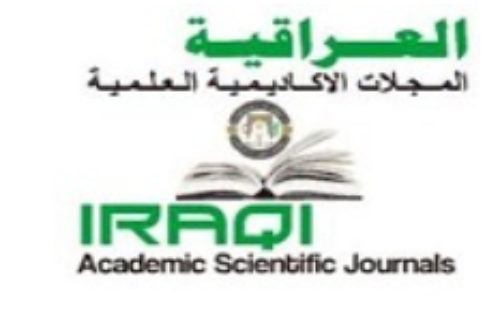Antibiotic Resistance and Biofilm Formation in Pseudomonas aeruginosa from Different Clinical Samples in Nasiriya, Iraq
DOI:
https://doi.org/10.32792/utq/utjsci/v12i1.1342Keywords:
Pseudomonas aeruginosa, Antibiotic resistance, Biofilm formationAbstract
Background: Pseudomonas aeruginosa is recognized as the main cause of nosocomial infections. The study aimed to investigate biofilm formation and antibiotic resistance patterns in clinical isolates of P. aeruginosa from various clinical samples from 12 to 70 ages. Methodology: This study included 120 samples obtained from Al-Hussein Teaching Hospital, Al-Nasiriya Teaching Hospital, Al-Haboubi Teaching Hospital, and Mohammed Al-Mousawi Children's Hospital in Nasiriya from January 2023 to June 2023. The samples included 56 wound swabs from cancer patients, 27 burn swabs from burn patients, 18 sputa, 14 ear swabs, and 5 bronchial-aspirate samples. The ages of the patients ranged between 12 and 70 years, and both sexes were represented. The drug susceptibility pattern and biofilm formation were performed for all the isolates. Results: After the final diagnosis, 80 samples (67%) were confirmed to be Pseudomonas aeruginosa. These isolates were obtained from 61 males (76.25%) and 19 females (23.75%).e highest resistance of P. aeruginosa to antibiotics was against the antibiotics Cefepime (96.25%), Amikacin (91.25%), Gentamicin (81.25%), and resistance to Ciprofloxacin was (76.25%), Ceftazidime (66.25%), Piperacillin (48.8%), and Aztreonam (47.5%). On the other hand, the lowest resistance reported in the present study was towards Colistin Sulphate (1.25%), followed by Imipenem (3.75%) and Meropenem (5%). In addition, the results of biofilm formation showed that 57 (71.25%) were non-biofilm producers, 10 (12.5%) were weak biofilm producers, 11 (13.75%) were moderate biofilm producers, and 2 (2.5%) were strong biofilm producers. Conclusion: no correlation was found between antibiotic resistance and biofilm formation.
Received: 2025-01-21
Revised: 2025-03-15
Accepted: 2025-03-28
References
[1] S. Al-Shimmary, "Molecular identification and prevalence of some virulence genes among Pseudomonas aeruginosa isolated from Iraqi patients," International Journal of Pharmaceutical Research, vol. 1, 2020.
[2] R. Polse, H. Khalid, and W. Mero, "Molecular Identification and Detection of Virulence Genes Among Pseudomonas Aeruginosa Isolated from Burns Infections," Journal of Contemporary Medical Sciences, vol. 10, 02/26 2024.
[3] S. Mengal¹, M. Taj, F. Rehman, U. Zafar, A. Mengal, A. Hussain, et al., "Pseudomonas aeruginosa as a pathogenic Organism," International Journal of Biosciences (IJB), vol. 14, pp. 286-291, 04/15 2019.
[4] E. Ahmed, "Multidrug Resistant Pseudomonas (P) aeruginosa : Medical Impact, Pathogenicity, Resistance Mechanisms and Epidemiology," vol. 5, 10/23 2017.
[5] A. Karruli, C. Catalini, C. D'Amore, F. Foglia, F. Mari, A. Harxhi, et al., "Evidence-Based Treatment of Pseudomonas aeruginosa Infections: A Critical Reappraisal," Antibiotics (Basel), vol. 12, Feb 16 2023.
[6] P. Pachori, R. Gothalwal, and P. Gandhi, "Emergence of antibiotic resistance Pseudomonas aeruginosa in intensive care unit; a critical review," Genes Dis, vol. 6, pp. 109-119, Jun 2019.
[7] L. Y. Chimi, M. Noubom, B. N. Bisso, G. S. Singor Njateng, and J. P. Dzoyem, "Biofilm Formation, Pyocyanin Production, and Antibiotic Resistance Profile of Pseudomonas aeruginosa Isolates from Wounds," International Journal of Microbiology, vol. 2024, p. 1207536, 2024.
[8] J. J. Biemer, "Antimicrobial susceptibility testing by the Kirby-Bauer disc diffusion method," Ann Clin Lab Sci (1971), vol. 3, pp. 135-40, Mar-Apr 1973.
[9] P. D. Tamma, P. N. A. Harris, A. J. Mathers, E. Wenzler, and R. M. Humphries, "Deconstructing the 2023 Clinical and Laboratory Standards Institute Revised Piperacillin-Tazobactam Breakpoints Against Pseudomonas aeruginosa," Clinical Infectious Diseases, vol. 76, pp. 1868-1870, 2023.
[10] M. M. Abdullah and W. M. Mehdi, "Isolation and Identification of Bacteria from The Middle Ear, Nose, Pharynx , Phenotypic and Investigation of Biofilm Formation in Isolated Bacteria," Egyptian Academic Journal of Biological Sciences, G. Microbiology, vol. 14, pp. 231-237, 2022.
[11] E. Babapour, A. Haddadi, R. Mirnejad, S.-A. Angaji, and N. Amirmozafari, "Biofilm formation in clinical isolates of nosocomial Acinetobacter baumannii and its relationship with multidrug resistance," Asian Pacific Journal of Tropical Biomedicine, vol. 6, pp. 528-533, 2016/06/01/ 2016.
[12] E. A. Edward, M. R. El Shehawy, A. Abouelfetouh, and E. Aboulmagd, "Prevalence of different virulence factors and their association with antimicrobial resistance among Pseudomonas aeruginosa clinical isolates from Egypt," BMC Microbiology, vol. 23, p. 161, 2023/06/03 2023.
[13] S. Attiah, H. Ghanim, and D. Khudhur, Molecular Detection of the exoU and toxA genes among Pseudomonas aeruginosa of patients with burn and wound infection in Baghdad City, 2021.
[14] A. Kadry, M. Ezz, and H. Abbas, "Phenotypic and genotypic characterization of Pseudomonas aeruginosa siderophores," Zagazig Journal of Pharmaceutical Sciences, vol. 27, pp. 22-30, 06/01 2018.
[15] S. M. El-Ageery and A. A. M. Al Otibi, "Phenotypic and Genotypic Characterization of Pseudomonas Aeruginosa Isolates from Burn Patients," Egyptian Journal of Medical Microbiology, vol. 25, pp. 53-60, 2016.
[16] A. J. Kzar and M. M. Sehree, "Study the Wide Variety of Prospective Bacterial Pathogens in Infections of Burns and Wound Patients in Baghdad City," 2024.
[17] S. Al-Bayati, S. Alahmer, A.-M. Shami, A. Al-Azawi, and S. Al-Bayati, "ISOLATION AND IDENTIFICATION OF PSEUDOMONAS AERUGINOSA FROM CLINICAL SAMPLES," Biochemical and Cellular Archives, vol. 21, pp. 3931-3935, 03/14 2022.
[18] R. D. Al-Obaidi and H. O. M. Al-Dahmoshi, "Biofilm and antibiotic resistance profile among Pseudomonas aeruginosa isolated from clinical samples," Eurasian Journal of Biosciences, vol. 14, pp. 1135-1139, 2020.
[19] R. Jawad, "Antibiotic susceptibility patterns of Pseudomonas aeruginosa isolated from clinical and hospital environmental samples in Nasiriyah, Iraq," African journal of microbiology research, vol. 10, pp. 844-849, 2016.
[20] M. Dash, S. Padhi, M. V. Narasimham, and S. Pattnaik, "Antimicrobial resistance pattern of Pseudomonas aeruginosa isolated from various clinical samples in a tertiary care hospital, South Odisha, India," Saudi Journal for Health Sciences, vol. 3, pp. 15-19, 2014.
[21] N. D. Hameed, L. H. Mahdi, and K. H. Rasool, "Antibiotic Sensitivity and Biofilm Formation in Pseudomonas aeruginosa Isolated from Wound Infections in Baghdad City," Journal of the College of Basic Education, vol. 30, pp. 43-56, 2024.
[22] M. M. Hoque, M. Ahmad, S. Khisa, M. N. Uddin, and R. Jesmine, "Antibiotic resistance pattern in pseudomonas aeruginosa isolated from different clinical specimens," Journal of Armed Forces Medical College, Bangladesh, vol. 11, pp. 45-49, 2015.
[23] M. R. S. AL-Rubaye, T. K. Mohammed, and H. N. Abdullah, "Isolation and Diagnosis of Multi Drug Resistance Pseudomonas Aeruginosa from Wound and Burnpatients in Baghdad City," Indian Journal of Forensic Medicine & Toxicology, vol. 14, pp. 2431-2437, 2020.
[24] S. Ahmed Babani, A. Najati, and K. S. Abass, "Isolation and identification of multi-drug resistant "pseudomonas aeruginosa" from burn wound infection in Kirkuk City, Iraq," Eurasian Journal of Medicine, vol. 13, pp. 1045-1050, 01/01 2019.
[25] M. K. Al-Khudhairy and M. M. M. Al-Shammari, "Prevalence of metallo-β-lactamase-producing Pseudomonas aeruginosa isolated from diabetic foot infections in Iraq," New Microbes New Infect, vol. 35, p. 100661, May 2020.
[26] P. Karami, P. Mohajeri, R. Yousefi Mashouf, M. Karami, M. H. Yaghoobi, D. Dastan, et al., "Molecular characterization of clinical and environmental Pseudomonas aeruginosa isolated in a burn center," Saudi Journal of Biological Sciences, vol. 26, pp. 1731-1736, 2019/11/01/ 2019.
[27] S. Golia and M. S. Suhani, "Jyoti. Isolation of Pseudomonas aeruginosa from various Clinical Isolates and it Antimicrobial Resistance Pattern in a Tertiary Care Hospital," Int J CurrMicrobiol App Sci, vol. 5, pp. 247-53, 2016.
[28] K. Ahmadi, A. M. Hashemian, S. M. Pouryaghobi, R. Akhavan, S. Rozmina, and E. Bolvardi, "Antibiotic resistance properties of Pseudomonas aeruginosa isolated from cases of superficial infections at the emergency unit," Jundishapur journal of microbiology, vol. 9, 2016.
[29] G. S. MOAZAMI and F. Eftekhar, "Assessment of carbapenem susceptibility and multidrug-resistance in Pseudomonas aeruginosa burn isolates in Tehran," 2013.
[30] T. Kefale, S. Haile, and K. Desta, "Occurrence of Multiple, Extensive and Pan Drug-Resistant Pseudomonas aeruginosa and Carbapenemase Production from Presumptive Isolates Stored in a Biobank at Ethiopian Public Health Institute," Infection and Drug Resistance, vol. 14, pp. 3609-3618, 09/04 2021.
[31] W. Wu, J. Huang, and Z. Xu, "Antibiotic influx and efflux in Pseudomonas aeruginosa: Regulation and therapeutic implications," Microbial Biotechnology, vol. 17, p. e14487, 2024.
[32] W. C. Reygaert, "An overview of the antimicrobial resistance mechanisms of bacteria," AIMS Microbiol, vol. 4, pp. 482-501, 2018.
[33] M. I. Nader, A. A. Kareem, M. N. Rasheed, and M. A. Issa, "Biofilm formation and detection of pslÁ gene in multidrug resistant Pseudomonas aeruginosa isolated from Thi-Qar, Iraq," Iraqi journal of biotechnology, vol. 16, 2017.
[34] S. A. Yousef, I. B. Hassan, and M. T. Al-Musawi, "DETECTION OF MULTI-DRUG RESISTANT AND BIOFILM FORMATION OF PSEUDOMONAS AERUGINOSA CLINICAL ISOLATES FROM DIYALA HOSPITALS," 2023 2023.
[35] R. A. K. AL-Fridawy, W. A. H. Al-Daraghi, and M. H. Alkhafaji, "Isolation and identification of multidrug resistance among clinical and environmental Pseudomonas aeruginosa isolates," Iraqi journal of biotechnology, vol. 19, 2020.
[36] A. Kunwar, P. Shrestha, S. Shrestha, S. Thapa, S. Shrestha, and N. M. Amatya, "Detection of biofilm formation among Pseudomonas aeruginosa isolated from burn patients," Burns Open, vol. 5, pp. 125-129, 2021.
[37] D. M. P. D. Oliveira, B. M. Forde, T. J. Kidd, P. N. A. Harris, M. A. Schembri, S. A. Beatson, et al., "Antimicrobial Resistance in ESKAPE Pathogens," Clinical Microbiology Reviews, vol. 33, pp. 10.1128/cmr.00181-19, 2020.
[38] P. Nasirmoghadas, S. Yadegari, S. Moghim, B. N. Esfahani, H. Fazeli, F. Poursina, et al., "Evaluation of Biofilm Formation and Frequency of Multidrug-resistant and Extended Drug-resistant Strain in Pseudomonas aeruginosa Isolated from Burn Patients in Isfahan," Advanced Biomedical Research, vol. 7, p. 61, 2018.
Downloads
Published
License
Copyright (c) 2025 University of Thi-Qar Journal of Science

This work is licensed under a Creative Commons Attribution 4.0 International License.












